Vallisneria giant in a home aquarium
Aquatic plants of the vodokrast family, native to the tropics of Southeast Asia, are found in the wild even in the reservoirs of the southern Russian regions, and not only in quiet lakes and ponds, but also in mountain rivers. Vallisneria gigantic is more thermophilic than other Vallisneria, but aquarists love it, probably there is not a single person who is fond of indoor fish who would not try to decorate their aquarium with this plant.
Content:
Description of the plant
Vallisneria gigantic - very large aquatic plant with narrow green leaves that can grow up to a meter in length. They are very tough, so they are not eaten by the inhabitants of reservoirs and aquariums. These decorative bushes have a creeping rhizome, color - from dark green to bright salad, depending on the light and other growing conditions. Vallisneria leaves are finely serrated on the sides, and smooth and rounded on top. It reproduces mainly in a vegetative way, since an adult plant produces many mustache-layering. They can be separated from the mother plant and transplanted when they have 4-5 of their leaves.
In nature, this dioecious plant blooms with small white phonographs floating on the surface of the water along with leaves, and propagates by seeds that are tied to female specimens. To obtain seeds with artificial breeding, it is necessary that heterosexual plants are kept in one reservoir or aquarium, and a lot of flowers have formed on them, and at the same time, which is difficult and impractical. This tropical perennial loves soft and warm water, well-silted soil. Growing strongly, it forms a dense layer of green mass on the surface of the water, preventing the penetration of light and air into the reservoir or aquarium.
Features of the content in the aquarium
Vallisneria gigantea is only suitable for large aquariums, it not only grows quickly, but also produces many root layers, so it has to be thinned regularly, removing unnecessary layers and whole plants. Otherwise, its long leaves will quickly cover the entire surface of the aquarium, preventing the flow of light and oxygen. You cannot prune the leaves if you want to preserve the plant. They begin to turn yellow and rot. It is best to place Vallisneria gigantic in the background and in the corners of the aquarium with good lighting and a day length of at least 12 hours. In this case, the perennial will grow evenly and constantly.
Vallisneria giant needs soft, slightly acidic water (hardness less than 8), temperature 20-26 degrees, and it is undesirable for it to fall below the first digit, otherwise the thermophilic plant may die. The soil of the aquarium for this perennial should be coarse-grained, with a high organic content. The plant responds well to adding clay under the roots. The root system will form correctly if the thickness of the soil layer is large enough, 8 centimeters. feeding this hydrophyte is not required, plant gets its nourishment from the silt that gradually forms around it. All Vallisnerians do not like the presence of rust, copper, sodium ions in the water.They can die if you treat fish in an aquarium with these plants with table salt, copper sulfate or bicillin. It is important not to overdo it and adding baking soda.
Other types of vallisneria
There are many other species of vallisneria, including dwarf (nana) species, that are suitable for growing in small aquariums. Vallisneria Natans has the same long leaves as the giant, but they are much narrower, therefore they do not shade the aquarium as much. Vallisneria spiral is one of the most popular aquarium hydrophytes, its leaves are twisted in a corkscrew shape and form spectacular thickets. In addition, the spiral specimens do not grow as fast as the others and usually reach a height of only 40-50 cm. And the spiral tiger variety also has black streaks on the leaves. Vallisneria gigantic red is distinguished by reddish-brown patches on the leaves, which become more saturated closer to the surface of the water.
All these species form picturesque thickets that serve as a refuge for fish, if necessary. Spiral Vallisneria are the most unpretentious, they are found in natural reservoirs of the Far East, the Caucasus, in the Volga and Don deltas. They can be planted in artificial reservoirs in summer cottages, but the plant may not withstand the harsh winter, so in the fall it has to be transplanted into a home aquarium or grown as an annual plant.



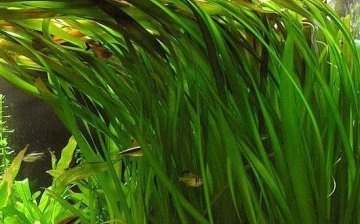
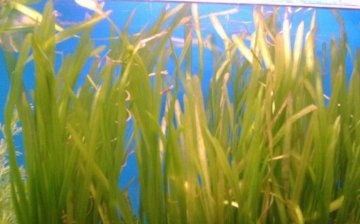
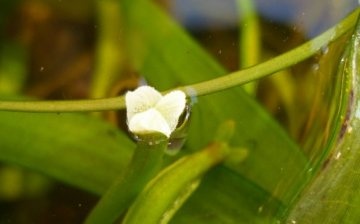
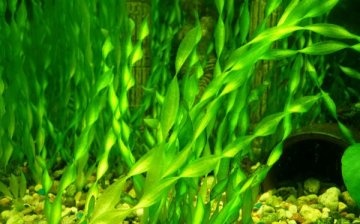






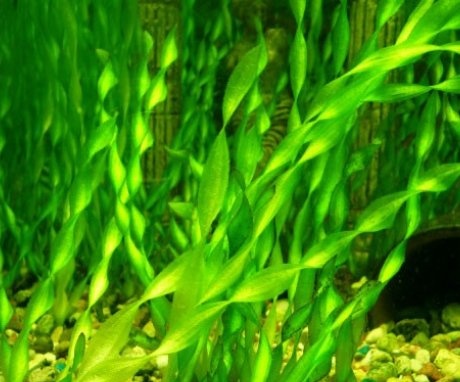
Wow it grows. But for fish - this is a good option, they have a place to hide from prying eyes. Now I am choosing plants for the aquarium and I think that you can try the dwarf Vallisneria.
But for fish - this is a good option, they have a place to hide from prying eyes. Now I am choosing plants for the aquarium and I think that you can try the dwarf Vallisneria.
I have grown such algae when there was an aquarium. Valisneria is not whimsical, it grows quickly. Very suitable for viviparous fish - such as guppies, swordtails, petsillia - there is a place for the fry to hide.